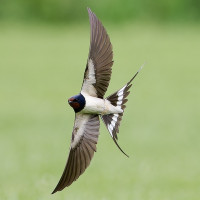Descripción
Rockland Broad is a busy site, with plenty of visitors enjoying its paths, lovely views and boating opportunities, but for a birder, the site can be hard work. It does however, have its rewards for those who are lucky and put in the time and effort to make a visit.
Throughout the year, Somormujo Lavanco and Cisne Vulgar can be seen on the lake, but other wildfowl is few and far between, possibly as a result of boat traffic. That said, Martín Pescador Común can be seen on most visits. The scrub surrounding the broad is great for Carbonero Palustre, Mosquitero Común and Agateador Euroasiático. A tame Garza Real may be seen, being fed by local fishermen by the dock. There are Cetia Ruiseñor here too, but they are more often heard than seen. Keep an eye out for Camachuelo Común in the car park too.
Winter can be unexpectedly quiet at Rockland, however, there is a chance of spotting a hunting Búho Campestre on the marshes to the east of the lake. Both Lechuza Común and Aguilucho Lagunero Occidental can be found there fairly easily too. In colder weather, check the lake for Serreta Grande and potentially rarer visitors. Large flocks of Ánsar piquicorto may come over the reserve from Buckenham and Cantley on the north side of the river.
Spring is a bit more lively, especially as the terns and hirundines return. The broad attracted Charrán Común, Charrán ártico, Fumarel Común and Gaviota Enana most years, while large mixed flocks of Avión Zapador, Golondrina Común and Avión Común can be seen from the path going along the lake edge. You may hear and see Cuco Común, Mosquitero Musical and Curruca Capirotada while exploring the reserve's paths.
Summer is the best time to see Alcotán Europeo, but otherwise, the reserve may be fairly quiet for birds. You may find Andarríos Chico along the river. Autumn may see the return of Águila Pescadora to the reserve, which often stop at the site on their long journey back to their wintering grounds in west Africa. Check the treetops on the west side of the broad, as these are favoured perches. There have been a few rarities seen here in autumns past, including Fumarel Cariblanco, Fumarel Aliblanco and Falaropo Picogrueso! It is always worth a check if you're in the area, especially after periods of rough weather.
Detalles
Accesso
There is a car park along New Inn Hill Road, just to the west of the staithe. Once parked, head east along the footpath, past the staithe to access the reserve. Follow the path along the eastern edge of the broad until you reach the marshes. There is no circular trail here, so once you're finished, head back the way you came.



